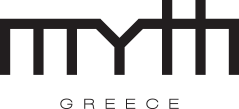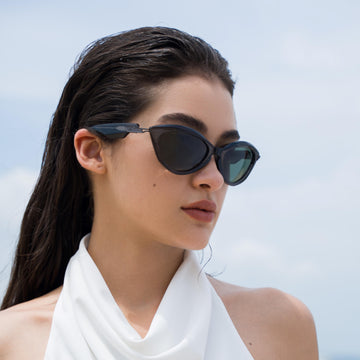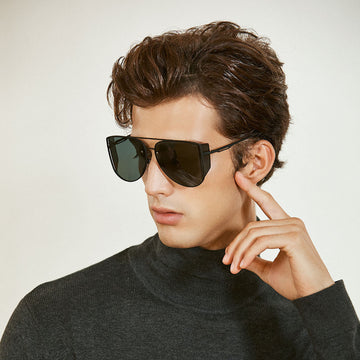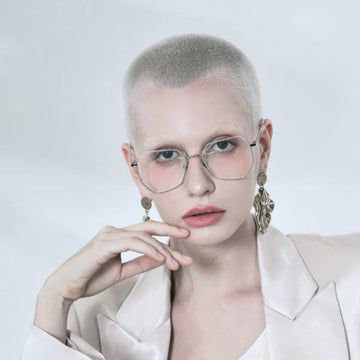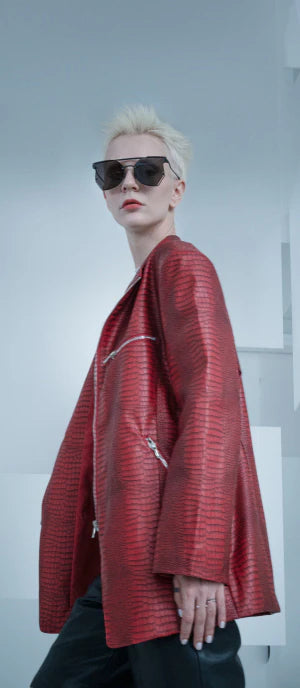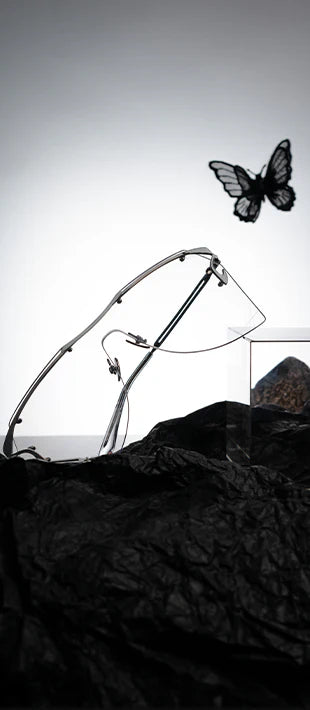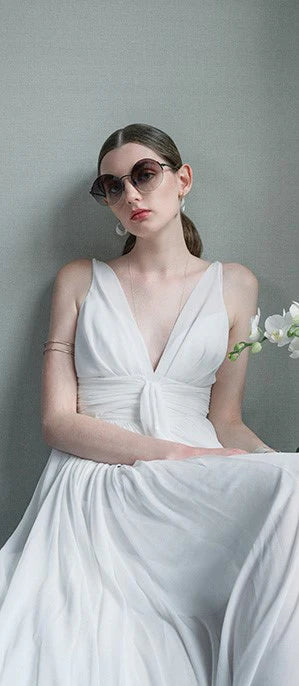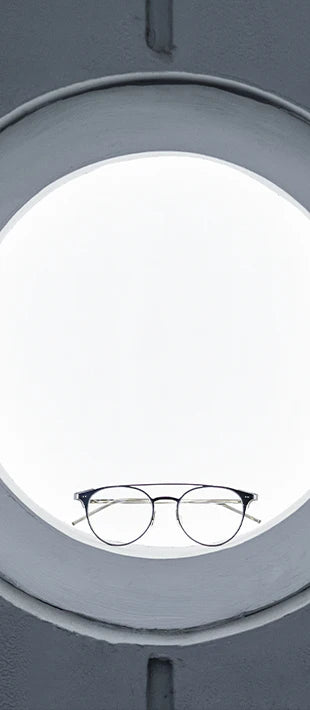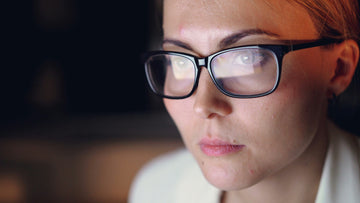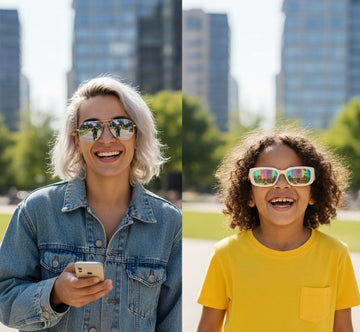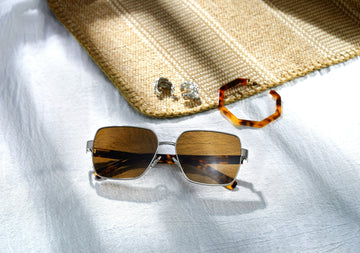In the modern digital age, our eyes are under constant stress from screens, documents, and shifting focus demands. Eye fatigue, or asthenopia, has become a common complaint, significantly impacting productivity and daily comfort. The right eyewear is no longer just about correcting vision; it's an essential tool for eye fatigue relief and protecting long-term eye health. This comprehensive article delves into why screens cause strain, which frame designs maximize comfort, and the innovative lens technologies available to provide visual clarity and superior screen protection.
Why Prolonged Screen Time Causes Eye Fatigue
Prolonged screen time is the primary culprit behind modern digital eye strain (DES), also known as Computer Vision Syndrome (CVS). This condition arises from a combination of factors unique to viewing a screen. Computer screens emit blue light, which has a shorter wavelength and higher energy than other colors, scattering more easily and potentially causing visual discomfort and blurriness.
Furthermore, staring at a fixed screen for extended periods reduces our blink rate by up to 50%. A low blink rate leads to tear film evaporation, causing dry eyes and a gritty sensation. The ciliary muscle inside the eye, which is responsible for focusing up close, is forced to constantly accommodate (contract) to maintain a clear image on the screen. This sustained muscular effort eventually leads to muscle fatigue, resulting in common symptoms like headaches, blurred vision, and difficulty refocusing between near and far objects. Anti-fatigue eyewear is specifically designed to counteract these effects by providing minor magnification support to ease the focusing effort.
Which Ergonomic Frames Offer Maximum Comfort
The frame you choose plays a crucial role in overall comfort and effectiveness of your anti-fatigue glasses. Ergonomic frames are designed to sit correctly on your face for long periods, minimizing pressure points and ensuring the optical center of the lens aligns perfectly with your pupil—a critical requirement for anti-fatigue and progressive lenses.
Key Features of Frames for All-Day Wear
Lightweight Materials: Frames made from materials like titanium, acetate, or high-grade TR90 plastic are significantly lighter than traditional metal frames, reducing pressure on the nose bridge and behind the ears. This is a vital factor for people who need eyewear for reducing eye fatigue during 8+ hours of desk work.
Adjustable Nose Pads: Silicone or soft plastic adjustable nose pads allow for precise customization of the fit, distributing the frame's weight evenly and preventing slippage or uncomfortable digging into the skin. Proper fit ensures the lenses are always in the optimal position for your eyes.
Flexible and Spring Hinges: Spring hinges provide a degree of flexibility to the frame arms, which helps them gently grip the head without squeezing. This feature not only enhances comfort but also increases the durability of the frames, making them more resilient to the stresses of daily use. Choosing an ergonomic frame design ensures that even the best lens technology can perform to its maximum potential.
The Best Lens Technologies for Visual Clarity and Screen Protection
The true power of anti-fatigue eyewear lies in its sophisticated lens technology. These lenses are engineered not only for vision correction but specifically to combat the unique challenges posed by digital screens and close-up work.
Anti-Fatigue Lenses and Blue Light Protection
Anti-fatigue lenses (also called digital relief lenses) are a specialized type of single-vision lens. They feature a slight power boost, or a progressive increase in magnification, in the lower portion of the lens. This boost, typically between +0.50 to +0.80 diopters, subtly assists the eye's focusing muscle when viewing near objects like a phone or computer screen, offering significant eye strain relief. By requiring less accommodative effort, these lenses help prevent the ciliary muscle from overworking, making them ideal for individuals in their 20s to late 40s who spend extensive time on digital devices but don't yet require traditional bifocals or progressives.
For maximum screen protection, the lenses should include blue light filtering technology. This can be in the form of a lens coating or a material integrated within the lens itself, which selectively absorbs or reflects a portion of the high-energy blue-violet light. This filtering not only reduces potential damage to the retina over time but, more immediately, improves visual clarity and reduces the glare and haze associated with digital screens. A high-quality anti-reflective (AR) coating is also non-negotiable, as it eliminates distracting reflections on both the front and back surfaces of the lens, further enhancing comfort.
Polarized Lenses: When to Use Them for Comfort
Use polarized lenses anytime you are outdoors and need to fight glare and eye strain. Polarization works by cutting harsh light reflections from flat surfaces like roads, water, or car hoods. While common in sunglasses, these lenses are also valuable in regular eyeglasses because they improve visual clarity and reduce squinting. This reduction in fatigue is especially useful for extended driving or long outdoor work sessions.
Want to learn more about how polarized lenses work? Check out our article on polarized vs. non-polarized sunglasses for more details.
MythGreece' Top Picks for Anti-Fatigue Eyewear
Based on a synthesis of user feedback, optical expertise, and technological specifications, we can identify a few exemplary combinations that excel in the category of eyewear for reducing eye fatigue:
1. Dusk — Minimal Strain, Maximum Focus
This lightweight, minimalist eyewear is designed for maximum visual comfort and to reduce eye fatigue. The frames feature a slender, unobtrusive dark metal construction, likely titanium, which significantly minimizes pressure points on the nose and ears, making them comfortable for all-day wear.
Key to their anti-fatigue design are the adjustable nose pads, allowing for a precision fit to ensure the lenses are perfectly centered before the eyes, thus optimizing vision correction and reducing unnecessary eye muscle strain. The classic, circular lens shape offers a generous field of view with minimal peripheral obstruction from the thin rim. This combination of ergonomic fit and lightweight materials is ideal for professionals and digital users seeking a sleek, functional solution to combat the discomfort of prolonged screen time.
2. DEMETER-OP — Smart Adaptation for Any Light
This gold-tone eyewear is a statement piece with a unique, geometric semi-rimless design. Its most eye-catching feature is the bold, raised double brow bar, giving the glasses a fashionable, futuristic aviator-inspired look.
The lack of a full rim emphasizes the unconventional, angular lens shape. For comfort, the design is inherently lightweight due to the minimal metal structure and thin temples. This, combined with adjustable nose pads, helps ensure a customized, pressure-free fit, making the glasses comfortable for extended, non-fatiguing wear. They are ideal for a sophisticated, modern aesthetic.
3. KEPLER — Designed for the Digital Generation
The KEPLER Eyeglasses (available in silver and gold) are highly fashionable, featuring an oversized, circular or Panto-style lens shape that commands attention. This retro-modern appeal is amplified by the sleek, minimalist semi-rimless design, which highlights the lens structure.
The unique thin metal brow bar connects the lenses, adding a subtle architectural detail that elevates the style beyond a simple round frame. This combination—the large, vintage-inspired silhouette with the contemporary, lightweight metal construction—makes the Kepler model incredibly chic and distinctive. It offers a bold, intellectual aesthetic, perfect for making a sophisticated fashion statement while remaining versatile enough for various occasions.
Daily Habits to Reduce Eye Strain Beyond Just Glasses
While anti-fatigue eyewear is essential, healthy visual habits amplify its benefits. Incorporating small lifestyle adjustments can make a big difference in reducing eye strain.
1. Follow the 20-20-20 Rule
Every 20 minutes, take a 20-second break and look at something 20 feet away. This simple exercise helps relax your focusing muscles and prevent fatigue.
2. Optimize Lighting
Avoid harsh overhead lights and excessive glare. Use soft, indirect lighting and ensure your screen brightness matches the ambient light level.
3. Adjust Screen Distance and Position
Position your screen about an arm's length away, with the top of the monitor slightly below eye level. This minimizes the need to strain your eyes or neck.
4. Stay Hydrated and Blink Often
Regular blinking keeps your eyes lubricated and prevents dryness. Using a humidifier in dry environments can also help maintain comfort.
5. Maintain a Balanced Diet
Nutrients like lutein, zeaxanthin, and omega-3 fatty acids support long-term eye health and reduce inflammation. Leafy greens, fish, and nuts are particularly beneficial.
FAQs: Do Glasses Really Help Reduce Eye Fatigue?
Q1: Do anti-fatigue glasses work for everyone?
Yes — anti-fatigue glasses are effective for most people who experience discomfort from extended screen time. They reduce muscle strain and improve focusing efficiency, especially for those who frequently shift between near and mid-range tasks.
Q2: Can I use blue light glasses without a prescription?
Absolutely. Non-prescription blue light glasses are ideal for people with normal vision who want protection from digital screens. They can also be combined with anti-reflective coatings for extra comfort.
Q3: Are anti-fatigue lenses the same as reading glasses?
Not quite. Reading glasses magnify near vision, while anti-fatigue lenses have a mild power boost only at the lower portion of the lens. This allows for smoother transitions between near and far focus, making them more versatile for modern screen use.
Q4: How long does it take to notice improvement?
Most users experience relief within a few days of wearing anti-fatigue eyewear consistently. Reduced headaches, better focus, and less dryness are common benefits.
Q5: Should I wear anti-fatigue glasses all day?
You can wear them as often as needed. For people with heavy screen exposure, wearing anti-fatigue glasses throughout the workday helps prevent cumulative strain and maintains sharper vision.
Conclusion
Eye fatigue is an inevitable part of the digital era, but it doesn't have to be your norm. Investing in the right eyewear for reducing eye fatigue — especially with anti-fatigue and blue light technologies — can transform how your eyes feel after long hours of work.
At MythGreece, we believe protecting your vision should never come at the expense of style. Our eyewear is designed to empower you with both comfort and confidence, keeping your eyes relaxed and your look refined — wherever your day takes you.
